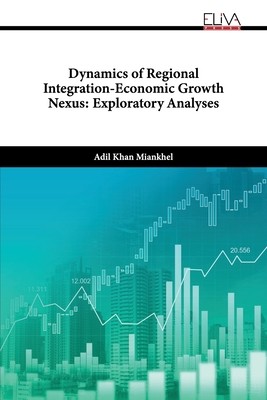
- We will send in 10–14 business days.
- Author: Adil Khan Miankhel
- Publisher: Eliva Press
- ISBN-10: 9994980610
- ISBN-13: 9789994980611
- Format: 15.2 x 22.9 x 0.8 cm, softcover
- Language: English
- SAVE -10% with code: EXTRA
Dynamics of Regional Integration-Economic Growth Nexus (e-book) (used book) | bookbook.eu
Reviews
Description
An export-led growth strategy is considered as a sustainable path to growth, and yet many countries are not exporting to their full potential.A country's inability to export to its potential is a reflection of institutional and structural impediments and rigidities at home as well as in its trading partners.As a strategy to overcome these socio-political and institutional barriers, countries engage with each other to improve the exporting environment through negotiating trade agreements.The first study deals with estimating Australia's export potential as it is relatively open among the resource-based developed economies for empirical testing. A major link between export growth and trade agreements is the flow of Foreign Direct Investment (FDI), mostly from the developed economies. Therefore, in order to find the impact of FDI on economic growth, the second study conducts an empirical analysis of six FDI recipient emerging countries. The third and fourth studies gauge the positive and negative impacts of regional integration on economic growth of member countries. The third study analyses the long-term impact of exports and FDI on output growth among the Association of Southeast Asian Nations (ASEAN), ASEAN plus 3 and ASEAN plus 6 groupings. The fourth study identifies the relative importance of shock propagation channels in EU, NAFTA, ASEAN plus 3, MERCOSUR and SAARC and tests the empirical findings for each region by observing the regions' responses to the idiosyncratic shocks of 2007 and 2008.
EXTRA 10 % discount with code: EXTRA
The promotion ends in 20d.08:46:09
The discount code is valid when purchasing from 10 €. Discounts do not stack.
- Author: Adil Khan Miankhel
- Publisher: Eliva Press
- ISBN-10: 9994980610
- ISBN-13: 9789994980611
- Format: 15.2 x 22.9 x 0.8 cm, softcover
- Language: English English
An export-led growth strategy is considered as a sustainable path to growth, and yet many countries are not exporting to their full potential.A country's inability to export to its potential is a reflection of institutional and structural impediments and rigidities at home as well as in its trading partners.As a strategy to overcome these socio-political and institutional barriers, countries engage with each other to improve the exporting environment through negotiating trade agreements.The first study deals with estimating Australia's export potential as it is relatively open among the resource-based developed economies for empirical testing. A major link between export growth and trade agreements is the flow of Foreign Direct Investment (FDI), mostly from the developed economies. Therefore, in order to find the impact of FDI on economic growth, the second study conducts an empirical analysis of six FDI recipient emerging countries. The third and fourth studies gauge the positive and negative impacts of regional integration on economic growth of member countries. The third study analyses the long-term impact of exports and FDI on output growth among the Association of Southeast Asian Nations (ASEAN), ASEAN plus 3 and ASEAN plus 6 groupings. The fourth study identifies the relative importance of shock propagation channels in EU, NAFTA, ASEAN plus 3, MERCOSUR and SAARC and tests the empirical findings for each region by observing the regions' responses to the idiosyncratic shocks of 2007 and 2008.


Reviews